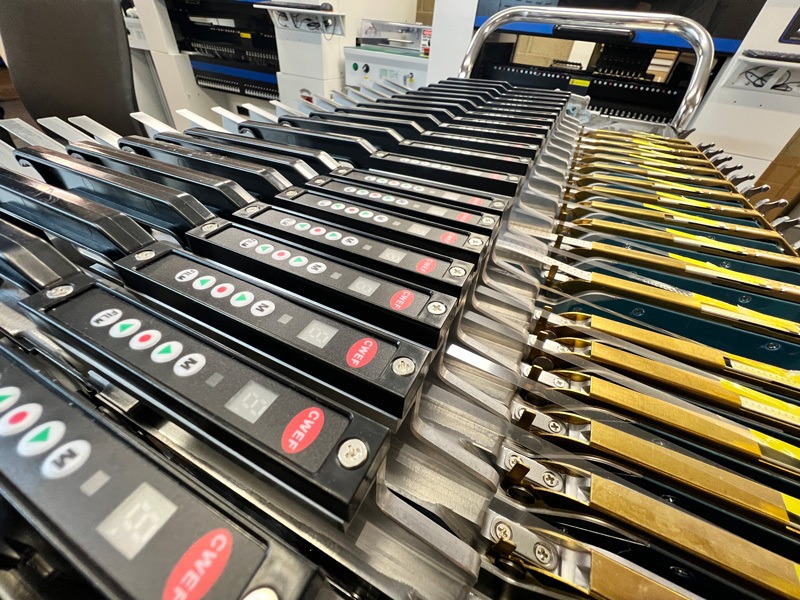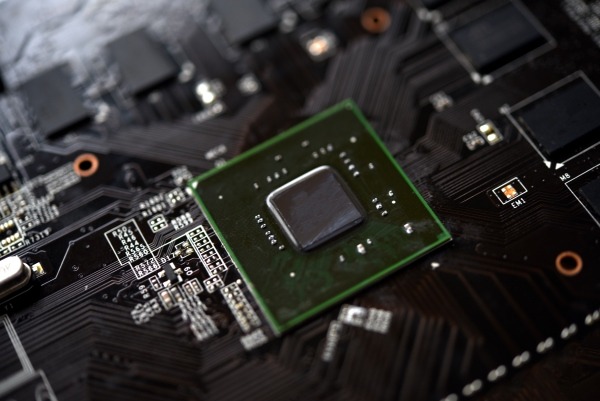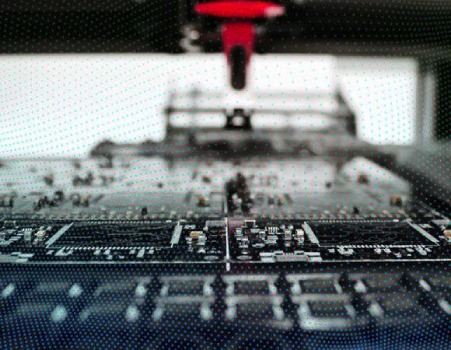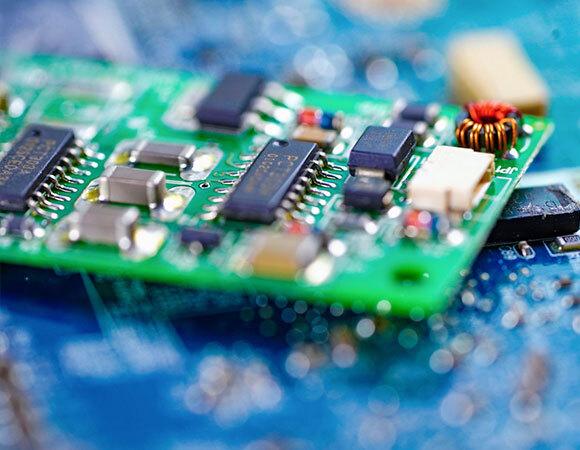Optimising Your Project for CEM Success
 In today’s fast-paced electronics industry, the success of a product launch often hinges on the ability to collaborate seamlessly with a Contract Electronics Manufacturer (CEM). CEMs play a critical role in bringing electronic products from concept to market, handling everything from design support to large-scale production. However, to fully leverage the expertise and capabilities of a CEM, companies must engage in thorough preparation. Properly preparing your project before partnering with a CEM can make the difference between a smooth, cost-effective production process and one riddled with delays and unexpected expenses. This article will outline key steps and best practices to ensure your project is primed for success.
In today’s fast-paced electronics industry, the success of a product launch often hinges on the ability to collaborate seamlessly with a Contract Electronics Manufacturer (CEM). CEMs play a critical role in bringing electronic products from concept to market, handling everything from design support to large-scale production. However, to fully leverage the expertise and capabilities of a CEM, companies must engage in thorough preparation. Properly preparing your project before partnering with a CEM can make the difference between a smooth, cost-effective production process and one riddled with delays and unexpected expenses. This article will outline key steps and best practices to ensure your project is primed for success.
Understanding the Role of a CEM
A Contract Electronics Manufacturer (CEM) is an essential partner in the electronics supply chain, providing expertise and resources that help companies bring their products to market. CEMs offer a broad range of services, including design assistance, prototyping, assembly, testing, and full-scale production. By outsourcing these functions, companies can focus on innovation and market strategy while the CEM handles the complexities of manufacturing. However, the success of this partnership heavily relies on thorough preparation. Properly prepared documentation, design considerations, and clear communication can significantly improve the quality, reduce costs, and ensure timely delivery of the final product.
Documentation Preparation
Bill of Materials (BOM):
A well-prepared Bill of Materials (BOM) is a cornerstone of successful collaboration with a Contract Electronics Manufacturer (CEM). The BOM is essentially a detailed list of all the components, parts, and materials required to assemble the product. Accuracy is critical, as any omissions or errors can lead to delays and additional costs. The BOM should include precise part numbers, thorough descriptions, and, where possible, information on approved vendors or sources. This level of detail helps the CEM in procurement and ensures that the correct parts are used, contributing to both the quality and consistency of the final product.
Gerber Files:
Gerber files are the digital blueprint of your printed circuit board (PCB), providing the CEM with all the necessary information to manufacture it accurately. These files include the layout of the PCB layers, solder masks, and silkscreens, among other details. Given their importance, it is essential to generate and verify Gerber files with utmost precision. Errors in these files can result in faulty PCBs, leading to significant rework and delays. Best practices for Gerber files include thoroughly checking for design rule violations and ensuring that all layers are correctly aligned and accounted for before submission to the CEM.
Assembly Drawings:
Assembly drawings are vital for guiding the CEM through the assembly process, ensuring that all components are correctly placed and oriented. These drawings should be clear, comprehensive, and leave no room for ambiguity. Key details to include are component placements, orientation marks, reference designators, and any special assembly instructions, such as handling procedures for sensitive components. Including visual aids like exploded views or 3D representations can also be helpful. A well-prepared assembly drawing minimises the risk of errors during production and helps the CEM achieve higher yields and a more reliable final product.
Testing Requirements and Specifications:
Defining testing requirements and specifications upfront is crucial for ensuring the product meets quality standards and performs as expected. These requirements should outline the specific tests that the product must undergo, such as functional testing, in-circuit testing, or environmental stress testing. Additionally, it is important to include any quality assurance metrics or standards that the product must meet, such as IPC standards or specific customer requirements. Providing clear testing protocols not only helps the CEM understand your expectations but also enables them to set up appropriate testing environments and procedures, ultimately leading to a more reliable and high-quality product.
Design Considerations
DFM (Design for Manufacturability):
 Design for Manufacturability (DFM) is a critical aspect of the product development process that focuses on designing products in a way that simplifies manufacturing, thereby reducing costs and minimising production errors. By considering manufacturing constraints early in the design phase, companies can avoid complex or expensive assembly processes. Key tips for ensuring manufacturability include selecting components that are standardised and easily sourced, optimising PCB layout to reduce assembly time, and ensuring that the design adheres to the capabilities of the chosen CEM. This proactive approach not only streamlines production but also enhances product quality and consistency.
Design for Manufacturability (DFM) is a critical aspect of the product development process that focuses on designing products in a way that simplifies manufacturing, thereby reducing costs and minimising production errors. By considering manufacturing constraints early in the design phase, companies can avoid complex or expensive assembly processes. Key tips for ensuring manufacturability include selecting components that are standardised and easily sourced, optimising PCB layout to reduce assembly time, and ensuring that the design adheres to the capabilities of the chosen CEM. This proactive approach not only streamlines production but also enhances product quality and consistency.
DFT (Design for Testability):
Design for Testability (DFT) is another essential consideration that ensures the product can be efficiently and effectively tested during and after manufacturing. Designing with testing in mind simplifies the testing process, allowing for early detection of faults and reducing the likelihood of costly rework. To incorporate DFT principles, designers should include test points on the PCB that provide easy access for probes and testing equipment. Additionally, ensuring that critical components are easily accessible and that the layout supports automated testing can significantly enhance the speed and accuracy of testing, leading to a more reliable final product.
Component Selection:
Selecting the right components is crucial for ensuring that the product is both manufacturable and scalable for mass production. Components should be readily available, reliable, and compliant with industry standards to avoid supply chain disruptions. It’s also important to consider the potential for obsolescence; selecting components with a stable supply and considering alternative parts for those with long lead times or uncertain availability can mitigate risks. Engaging with your CEM during the component selection process can also provide valuable insights into availability and cost, ensuring that the final design is both practical and economically viable for large-scale production.
Communication and Collaboration
Setting Clear Expectations:
Clear communication from the outset is crucial for a successful partnership with a Contract Electronics Manufacturer (CEM). Defining and communicating project timelines, milestones, and deliverables ensures that both parties are aligned and working towards the same goals. This involves outlining specific deadlines for each phase of the project, from design and prototyping to production and testing. It’s important to be transparent about expectations regarding quality standards, cost constraints, and delivery schedules. By establishing these parameters early, you can avoid misunderstandings and ensure that the CEM has a clear roadmap to follow, ultimately leading to a smoother and more efficient production process.
Regular Updates and Meetings:
Maintaining regular communication through scheduled updates and meetings is essential for tracking project progress and addressing any issues that arise. Establishing a routine for check-ins, whether weekly or bi-weekly, allows both your team and the CEM to stay informed about the current status and any potential challenges. Using project management tools can greatly facilitate this process, providing a centralised platform to monitor milestones, assign tasks, and document changes. Regular updates help to identify problems early, enabling timely resolution and keeping the project on track. This ongoing dialogue also strengthens the partnership, fostering a collaborative environment where both parties are invested in the project’s success.
Handling Design Changes:
 Managing and communicating design changes effectively is vital to avoid disruptions during the manufacturing process. Best practices include promptly documenting any alterations to the design and sharing these updates with the CEM as soon as possible. This ensures that the CEM can adjust their processes and materials accordingly, preventing costly mistakes or delays. It’s also important to use a controlled change management system to track revisions and maintain a clear record of the design’s evolution. By keeping the CEM informed and involved in the change process, you can ensure that modifications are seamlessly integrated into production, maintaining the integrity and quality of the final product.
Managing and communicating design changes effectively is vital to avoid disruptions during the manufacturing process. Best practices include promptly documenting any alterations to the design and sharing these updates with the CEM as soon as possible. This ensures that the CEM can adjust their processes and materials accordingly, preventing costly mistakes or delays. It’s also important to use a controlled change management system to track revisions and maintain a clear record of the design’s evolution. By keeping the CEM informed and involved in the change process, you can ensure that modifications are seamlessly integrated into production, maintaining the integrity and quality of the final product.
In summary, preparing your project for a Contract Electronics Manufacturer (CEM) involves several critical steps: ensuring complete and accurate documentation, incorporating Design for Manufacturability (DFM) and Design for Testability (DFT) principles, managing suppliers and materials effectively, and maintaining clear, consistent communication. These steps are essential for achieving a smooth, cost-effective production process and high-quality final product. Thorough preparation and ongoing collaboration with your CEM are key to success, as they enable you to leverage the CEM’s expertise and avoid common pitfalls. Companies should begin preparations early and approach their CEM as a strategic partner in achieving their manufacturing goals.
To streamline your procurement process, consider completing our credit application to get started quickly and efficiently with us.



